![]()
This page is also available in French
From early in his career Berlioz became a favourite target for the wit of Paris’ cartoonists. The performances of Les Troyens in November-December 1863 at the Théâtre-Lyrique gave ample scope for their work, partly because of all the ancient costumes involved, and partly because the work ran for several weeks and thus gave plenty of time for the artists to observe their subject.
This page reproduces a series of cartoons which appeared in the paper Le Journal amusant on 28 November 1863 (that is to say some three weeks after the opening performance on 4 November). The drawings were the work of the cartoonist A. Grévin. The images have been scanned from a copy of the journal in our collection. It will be noted that most of the journal’s issue was in fact devoted to Les Troyens (seven pages out of eight), an indication of the interest the work generated in the Paris public at the time. The cartoons cover almost every scene of the work as it was performed, and thus give a fuller pictorial record of the performances and the singers than is otherwise available, though of course from a satirical angle.
It will be noted that the cartoonist, for all his mischievous wit, did appreciate the work: he notes at the bottom of the title page that there were three or four pieces in the work that he would have been happy to compose himself... It might also be pointed out that in his numerous comments on the reactions, favourable or hostile, of the press to Les Troyens Berlioz did not mention the cartoonists at all, as though he did not take offence at their work.
The captions in the original have been transcribed in the French version of this page; they are written in an often colloquial style and no attempt has been made to translate them here.
![]()
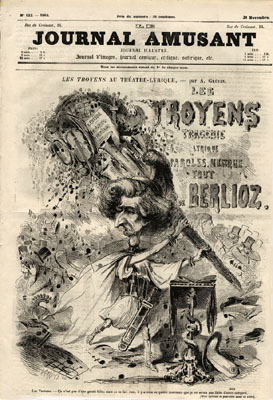
The caption at the bottom reads: ‘The work is not very jolly, but that does not matter; there are three or four pieces which I would have been happy to compose. You may possibly share my opinion’.
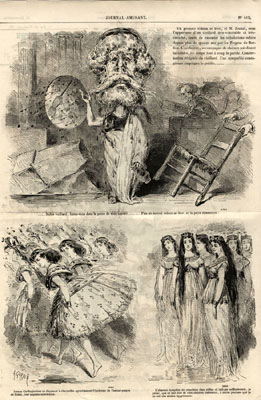
Top: the rhapsode who introduces the work (a spoken part); bottom: the ladies attending Dido in the opening scene.

From top to bottom and from left to right: the minister Narbal; Dido addressing the people of Carthage; Dido and Anna; the boy Ascanius.
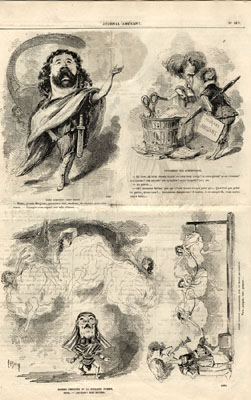
From top to bottom and from left to right: Aeneas; Berlioz commenting on the omission of the Chasse royale et orage; the dancers in the ballet scenes.
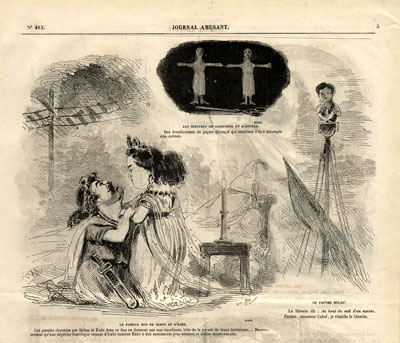
From left to right: Dido and Aeneas; the ghosts that appear to Aeneas; the song of the sailor Hylas.
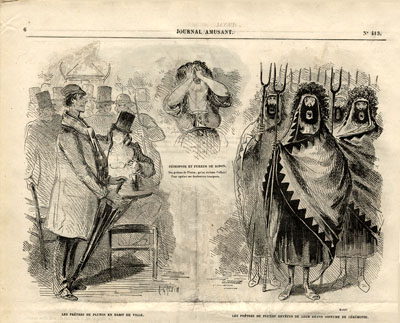
From left to right: the priests of Pluto in everyday dress; Dido’s despair; the priests of Pluto in ceremonial dress.
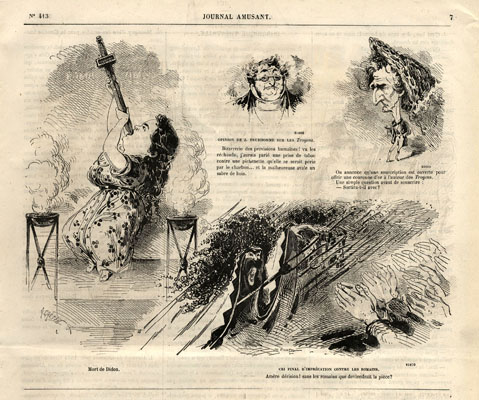
From left to right and from top to bottom: Dido’s suicide; comments on the work from a man in the street; Berlioz due to receive a gold crown raised by subscription; the final curse of the Carthaginians against the Romans.
![]()
The Hector Berlioz Website was created by Monir Tayeb and Michel Austin on 18 July 1997. This page created on 1 January 2018.
Copyright notice: The texts, photos, images and musical scores on all pages of this site are covered by UK Law and International Law. All rights of publication or reproduction of this material in any form, including Web page use, are reserved. Their use without our explicit permission is illegal.
© Monir Tayeb and Michel Austin. All rights reserved.
![]() Back to The Première of Les Troyens in November 1863
Back to The Première of Les Troyens in November 1863
![]() Back to Home Page
Back to Home Page